The comic book guy
From SMH.com.au
Owen Thomson
March 17, 2007
This 73-year-old publisher can hardly wait to get to work every morning - it keeps him young.
Comic book hero The Phantom may enjoy worldwide kudos as "the man who cannot die" but his Australian publisher Jim Shepherd could perhaps be equally well celebrated as "the boy who never grew up".
Take the 73-year-old's inner-city office, for instance. Filled with classic Phantom memorabilia including mint-condition action figures and back issues, it's an inner sanctum that, if not for the formal-looking desk and computer, could almost be mistaken for a shrine to the purple-clad enigma.
"I can hardly wait to get to the office every morning," Shepherd says. "Right at this very minute I'm looking at a pile of artwork that dates back to 1939, just making sure that every single page is there. It keeps you young, it really does."
Becoming a successful comic book publisher was never one of Shepherd's job ambitions. That's not to say that comics didn't play an intrinsic role in his early life. Indeed, he thinks he probably taught himself to read by immersing himself in the medium.
"I can vividly remember reading Buck Rogers and Dick Tracy comic books and newspaper strips from the age of four or five," he says. "It was the artwork I loved the most. I really didn't take that much notice of the storylines or the cleverness of the dialogue. I became terribly interested in art and I still am."
But it was writing that ultimately dominated his early focus. "From the age of about 12 I always had this hankering to be a writer, but mainly a sports writer," he recalls. "When I was 13 or 14 I submitted some articles to a magazine called Australian Motor Sports and all my stuff was accepted. From that point on I think it was ego that was driving me a bit. It was this idea of 'How far can I go?"'
Since those formative years, Shepherd's career has been characterised by lashings of colourful diversity.
He started as a copy boy with the now defunct Associated Newspapers in 1950 and was subsequently awarded a journalism cadetship on The Daily Sun and Sunday Sun. Within a year he was offered a graded position at the rival Daily Telegraph and Sunday Telegraph.
"I became a D-grade sports writer after one year's cadetship and never ever passed the shorthand exam," he recalls with mild satisfaction.
Shepherd's next step was into radio as a broadcaster and promotions manager at 2CH before moving to 2UE as that station's No. 2 sports broadcaster. He then opted temporarily out of journalism to become national advertising manager for food canning company Gordon Edgell and Sons.
"I had the company car and a lot more money, but that frankly became a little bit boring and I think I was hankering for the old days of seeing my name in print or hearing myself on radio. Then out of the blue Channel Ten started in the early 1960s. I had an offer to join as the sporting director so I did."
After six years he took the role of national promotions manager for tobacco company Rothmans, remaining in the position for nearly a decade before leaving to start his own small publishing company.
But it was in late 1987 that the most significant event of his professional life occurred in the form of a chance lunchtime encounter with the then owners of Frew Publications, the company that has published The Phantom continuously in Australia since 1948. As Shepherd recalls, their situation looked grim.
"They said to me: 'You could be just the guy we need. It looks as though we're going to lose the licence to publish The Phantom because we're both so old and [Phantom owners] King Features Syndicate are not very happy with the product. Would you like a trip over to New York to see if you can save our bacon?'
"I thought, 'Why not?"'
Shepherd flew to the US and impressed the King Features hierarchy with an impromptu plan to revive the title's flagging fortunes "but by the time I got back to Australia one of the partners had died and the other had had a stroke".
Never one to pass up an unexpected opportunity, Shepherd took over the company with a silent partner. After five years he decided to buy out all shareholders and become the sole owner.
Today The Phantom's circulation figures hover at a healthy 25,000 an issue. But anyone who thinks Shepherd's role is nothing more than child's play should think again. Frew publishes 31 editions a year, a schedule that uses up nearly 60 stories.
"About 20 to 26 of those stories also have to be translated from Swedish into English and then lettered," he explains.
"All the covers have to be designed and commissioned. I do all the editorial pieces, design a lot of the covers, physically do the artwork myself on occasions and select the stories. On four occasions, I've actually written the stories as well."
Track record
Qualifications what used to be called the leaving certificate. That's it. I've no other academic qualifications whatsoever.
Work motto I think the only way to success with writing is to keep working on it, keep polishing, keep honing. Never think you've got it made. Keep looking at your work and being terribly critical of yourself.
Lucky break bumping into the two guys who were then running Frew Publications. It opened the doors to international travel and meeting a lot of people I'd only ever heard about. I can now say I've had coffee with Catherine Zeta-Jones, Billy Zane and (Phantom creator) Lee Falk and so many famous artists and writers.
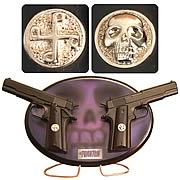














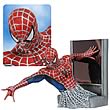

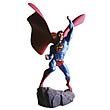
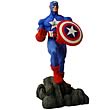
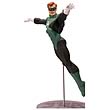
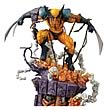

No comments:
Post a Comment